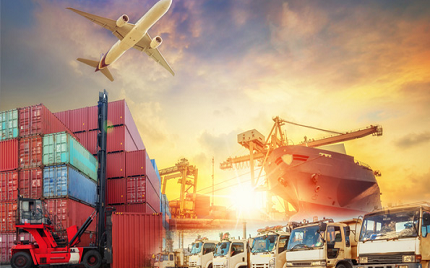For any manufacturing organisation, we can divide the supply chain into two parts. One is the upstream supply chain and the other is downstream supply chain. In this podcast, I am going to discuss the need for multiple supply chains for the downstream. The downstream supply chain originates at the factory and ends with the delivery of the product to the end consumer.
We are concerned only with the forward product flow, so I am not considering the reverse product flow or the reverse logistics part. This sets the scope for our .discussion related to multiple supply chains

Click here to listen to this episode
It became a recent trend that companies across the world are working towards merging their individual supply chains to create a single downstream supply chain. This to increase the productivity of people and systems, bring economy of scale in operation and ultimately to reduce the cost of supply chain. But one should be cautious before making such decision. At times it would be better to have multiple supply chains to effectively serve different type of customers.
Let us take an example here. RoadKing is a tyre company which has two major types of customers. One is the Automotive OEMs and the other is the Aftermarket. RoadKing operates two different supply chains to meet the specific requirements of its two different type of customers.
In case of the OEMs, RoadKing is mandated to deliver the tyres Just-In-Time (JIT) to meet the OEMs shift production requirements. In each shift the OEM rolls out 200 cars, hence it needs 1000 tyres per shift. Most of the automotive OEMs operate on Just-In-Time, hence they enter into a contract with RoadKing which is very stringent. Any discrepancies in terms of quality or quantity or time will invoke severe penal clauses and may lead to potential loss of longterm order.
On the other hand, for the aftermarket customers, RoadKing delivers the product through regional distributors, retail stores and service stations to the individual car owners.
If you compare the two supply chains, the first one has to be very agile and the cost of failure is high. So RoadKing uses its own fleet of trucks to timely deliver the tyres to the OEMs. But in case of the aftermarket the shipments are done through railways and roadways. The tyres are shipped to the distributors through public carriers at a very competitive price. The cost of running the OEM supply chain is significantly higher compared to the aftermarket supply chain. But of course the margin RoadKing enjoys from OEMs is higher compared to aftermarket.
For the last year or so, there is a great debate going on at the leadership level at RoadKing, whether they should go for a single supply chain or maintain the status quo, meaning continuing with the present OEM and Aftermarket supply chains. What do you think? Should RoadKing merge its supply chains or Not? What are all the data you need to make that decision? Will its two types of customers be happy?










